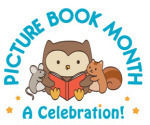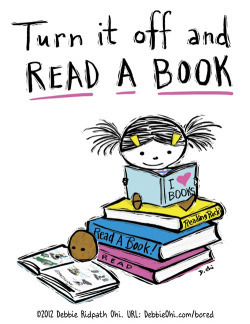Debbie Ridpath Ohi's Blog, page 86
December 11, 2013
My WHAT DOES THE FOX SAY? obsession, solving a mystery AND the new picture book from Simon & Schuster BFYR
Back in September, I posted about being obsessed with the WHAT DOES THE FOX SAY? music video, and was trying to identify the children's picture book featured in the video:

Thanks to all who tried to help me. Cathy Ballou Mealey, for example, asked her friend Norwegian children's book writer and illustrator, Svein Nyhus. Apparently Svein said he didn't recognize the book but thought it might be a fake cover.
Anne C. Holm cleared up the mystery, saying that the fake book cover art was created by Norwegian artist Julie Ebbing, who was studying art at a university in Oslo.
But then....
Later in the year came the news: Ylvis signed a deal with Simon & Schuster Children's! Norwegian brothers Bård and Vegard Ylvisåker had already asked Svein Nyhus to be the illustrator.
Here's the cover as it appeared in Norway, plus a photo of the illustrator:
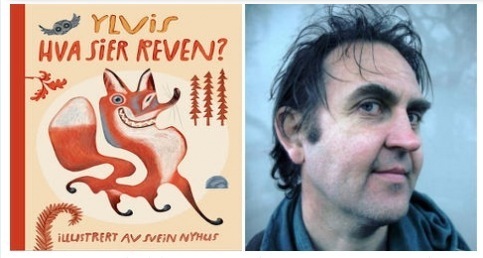 Images from The Local.The artist blogged about some insider info about one of the illustrations in the Norwegian version:
Images from The Local.The artist blogged about some insider info about one of the illustrations in the Norwegian version:
 For details, see Svein Nyhus's blog.See Svein's blog post about how he worked in a minimalistic joke into the Norwegian version above. Even if you don't understand Norwegian, I encourage you to scroll to the bottom of Svein's picture book entry page for sample illustrations and a peek into his process.
For details, see Svein Nyhus's blog.See Svein's blog post about how he worked in a minimalistic joke into the Norwegian version above. Even if you don't understand Norwegian, I encourage you to scroll to the bottom of Svein's picture book entry page for sample illustrations and a peek into his process.
The WHAT DOES THE FOX SAY? picture book was edited by Christian Trimmer, Senior Editor at Simon & Schuster Books For Young Readers, and the art director was Laurent Linn (my art director at S&S yaaaaaay). Here's a photo that Laurent tweeted, when the sample books came in:
I *love* the art.
"We are very excited about this book," said Vegard Ylvisaker in a news release. "It is much more than just a spin-off from the video. We actually started the process with the illustrator before we even uploaded the video to YouTube. As we were working with the song it just felt like it had the potential of becoming an interesting book as well, mostly because all of a sudden we found ourselves wondering what does the fox really say?"
The Ylvis guys recently did a book signing in Toronto at Chapters-Indigo but AAAAAUUUGGGGHHHH I had to miss it. My friends Kathleen and Walter lined up to get their copy signed:

Ok, I think it's time to listen to the WHAT DOES THE FOX SAY? video again:







December 9, 2013
Poll Results: Kids' Books For Adults?
After reading a New York Times article about adult-themed children's book parodies for adults, I asked you all how you felt about kids' books for adults. Thanks to all who participated. Most of you are neutral to iffy about them. One person says that children's book parodies make a fair amount of money for the bookstore where he or she works.
Like any book, there are good ones and bad ones. "I think it's a great way to reconnect with the books you loved (or perhaps hated) as a child. The best parodies carry and underlying mature-themed message or commentary on the world, post-childhood innocence," one respondent said.
More details and comments:

Nearly 32% of you weren't crazy about adult-themed children's book parodies. 26% didn't mind, 13% didn't care, 11% of you love them, 8% hatehateHATE them.
Some of your comments:
"I'm not crazy about them personally, but they make a fair amount of money for the bookstore I work at."
"The punning of the titles always makes me laugh and admire the wit of the person who dreamt them up, but for me the humour is more in the fact of them than the contents of the books. I enjoy seeing them at till points and on tables in humour sections of bookshops but wouldn't go as far as to actually buy one unless it was very cheap or as e.g. a Secret Santa gift."
"I find them sort of pointless. Good for a "heh" in the bookstore, but are you really going to treasure them for years? - @electricland"
"If they're done well enough, they can be fun, but too often I'd be horrified if my kids found and read them - and since they look like kids' books, if they found them they would probably read them. Some could be hurtful. Many just confusing."
"I am entertained but I think the authors need to take more care than they do with their parodies. Mum bought me Goodnight iPad and it doesn't do a good job with the scansion. I think this is a legacy of being Phil's partner - if you're going to Filk something, DO IT RIGHT! I printed out a copy of the additional text someone has written for The Very Hungry Caterpillar with the intention of reading it in a filk circle, and I'd probably buy it if it came out as a book."
"True parodies for adults are great - if shelved in the right section. But I HATE finding them in with the other picture books. And the ones that then go the other way, and try to adapt the parody for adults into something suitable for kids? I've never seen one that worked. - @IshtaWrites"
"I think they perpetuate the belief that a children's book is somehow less of a 'real' book because it's for a child."
"I think it's a fad so far, kicking out clever novelty items, similar to novelty records. It might continue on for a while in the same way Weird Al Yankovic keeps spitting out CDs, but I don't see it becoming a market segment. I think within this small sub-genre there is room for works that are not satirical and snarky, but more thought provoking. It could be a way to make a point regarding some social issue for example, but that market will also only support a very limited number of titles."
"I think it's a great way to reconnect with the books you loved (or perhaps hated) as a child. The best parodies carry and underlying mature-themed message or commentary on the world, post-childhood innocence. I just read The Taking Tree yesterday and loved it."
"Yeah, why not? I guess I've got a chuckle out of one or two of them. I try not to get angry at people who are having fun wrong. @aiabx"
"Would you include Go the Bleep to Sleep in this category? It was a fun one-time-read, but I didn't feel it was worth producing as a book and having on the shelf. Feel the same way about Sense and Sensibility and Zombies, though. A joke taken much too far. Cheapens and deadens a text I love. - Aino Anto"
"Wrote 3! Picture books for adults so simple (but layered) that even a child could understand. Works at many levels."
"I think they can be clever, but more often than not, they're gimmicky and annoying. I have never purchased one."
----------------
You can also see other current and past surveys in the Inkygirl Survey Archives.







December 5, 2013
Looking for holiday gift ideas? Here's a list of children's book illustrators on Etsy

I have an Etsy shop but haven't had anything posted for sale in ages (I might start selling prints and some handmade oddities in 2014, though). While doing some holiday shopping on Etsy recently, I became curious about other children's book illustrators who had shops.
I've posted a list below, but I know I'm missing many names. If YOU know of a children's book illustrator with an Etsy shop, please do post the URL of their Etsy shop in the comments section, thanks!
Sheralyn Barnes: original oil paintings, giclee prints
Kate Barsotti: pencil & sheep needle felting
Sophie Blackall: mainly prints
Christopher Denise: original illustrations created for Redwall & other children's books, no prints
Chrissy Fanslau: Don't Touch The Baby & Wash Your Hands signs
Christina Forshay: prints
Beckett Gladney: prints, original art, sketchbook & portfolio covers, journals, earrings, more.
Stephanie Graegin: prints
Jannie Ho: original illustrations (currently empty)
Renée Kurilla: prints
Sally Mavor: note cards, posters, prints, autographed books.
Hazel Mitchell: prints and original art.
Debbie Ridpath Ohi: prints and art oddities (currently empty)
Moira Swiatowski: original ink drawings.
Susan Taylor Brown: cards, prints, original art.
Laura Zarrin: prints, original art.
Special thanks to Kate Barsotti for the heads-up about many of the shops above.







December 2, 2013
Comic: Snowman Writer
Sat.Dec.7th, 2013 is Take Your Child To A Bookstore Day
 Click image above for print-ready PDF; feel free to use to help spread the word. Prints fine in b&w, too.
Click image above for print-ready PDF; feel free to use to help spread the word. Prints fine in b&w, too.
Founded by suspense writer Jenny Milchman, Take Your Child To A Bookstore Day is about "instilling a love of bookstores in children so that they will value and support this most precious of resources as they go on to enter and create communities of their own."
Already a number of bookstores from the U.S., Canada, England, Australia and Germany have joined the project; you can see the map on the TYCTAB website.
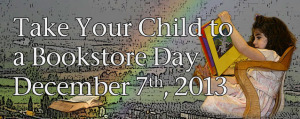 Visit the Take Your Child To A Bookstore Day site for pins, banners and posters.
Visit the Take Your Child To A Bookstore Day site for pins, banners and posters.
You can find banners and posters on their website, and you're free to download/print a poster I've created to help promote Take Your Child To A Bookstore Day.
Where to find out more info:
Take Your Child To A Bookstore Day website
Kudos to the TYCTABD Board Of Directors for running the event: Jenny Milchman, Beth Miller, Todd G. Monahan, and Paul Maguire.







November 28, 2013
Happy American Thanksgiving!

To my American friends out there: Happy Thanksgiving!
If you're doing NaNoWriMo this year, don't forget to check out my friend Errol Elumir's NaNoToons.







November 25, 2013
I'M BORED into its third printing, yay!
Jeff and I got back from BoardGameGeek last night. After being away for a week, we had a pile of snailmail to go through. Mine was Very Nice Snailmail and included:
(1) Check from Penguin Books for the use of one of my writing comics. I love checks. :-)
(2) Note from Simon & Schuster Books For Young Readers that I'M BORED has gone into a third printing, WAHOO!!! Considering that the book just came out late last year, I'm pretty happy.
 For those who haven't been following my work up to now, I'M BORED is a picture book written by Michael Ian Black, illustrated by yours truly. More info on the Simon & Schuster website plus I have tons of bonus material, activities, print-ready goodies available on the I'M BORED Bonus Page including some Thanksgiving-themed greeting cards and activity sheets.
For those who haven't been following my work up to now, I'M BORED is a picture book written by Michael Ian Black, illustrated by yours truly. More info on the Simon & Schuster website plus I have tons of bonus material, activities, print-ready goodies available on the I'M BORED Bonus Page including some Thanksgiving-themed greeting cards and activity sheets.
(3) Advance signing check (did I mention I love checks? :-)) for SEA-MONKEY AND BOB, a picture book written by Aaron Reynolds, to be illustrated by MEEEEE, coming out from Simon & Schuster Books For Young Readers in Fall 2015. I just recently created a Facebook page for SEA-MONKEY AND BOB, by the way, and would soooo appreciate any Likes. :-)







November 16, 2013
Interview with Molly Idle about writing and illustrating TEA REX (Viking/Penguin) plus advice for aspiring children's book writers & illustrators
I first met Molly Idle at the 2010 SCBWI Summer Conference, when she won the overall portfolio competition and I remember being so impressed by her art. Molly worked for DreamWorks Feature Animation Studios for five years before leaving to devote all her time to children's book illustration. Molly's FLORA AND THE FLAMINGO recently made the semi-finals in the Goodreads Best Picture Book Of 2013!
Her recent picture books include TEA REX (Viking Press) and FLORA AND THE FLAMINGO (Chronicle Books); you can see covers and samples from all of Molly's book projects on her site. This interview focuses on TEA REX.
TEA REX by Molly Idle
Published by Viking Juvenile/Penguin / For ages 3-8
Where to find Molly: Website - Blog - Facebook - Twitter
 Molly's studio space.
Molly's studio space.
Q: What was your publication process? Also: If you have an agent, how did you get your agent?
 "My prized rubber chicken."Having lighted upon the idea for a tea party with a T-Rex, I proceeded to make a lot of truly terrible starts for manuscripts in my head, and on paper, before I hit upon the right way to tell the story.
"My prized rubber chicken."Having lighted upon the idea for a tea party with a T-Rex, I proceeded to make a lot of truly terrible starts for manuscripts in my head, and on paper, before I hit upon the right way to tell the story.
All my early attempts, talked too much. I would set up a joke, tell the joke, and then explain the joke I just told... It was the picture book equivalent of someone winking and nudging you in the ribs after telling you a joke... "Get it? Get it?" These drafts all seemed to say. It just wasn’t working... So, I decided to set aside writing for a bit and just start sketching the story out to see if I could make it work visually.
 "Taped to my desk: The first tiny sketch I did for TEA REX (and a bit of fortune cookie wisdom that reminds me to keep my nose to the grindstone...)"
"Taped to my desk: The first tiny sketch I did for TEA REX (and a bit of fortune cookie wisdom that reminds me to keep my nose to the grindstone...)"
I had three sketches finished when, as a result of winning the SCBWI portfolio competition, I had the chance to meet with Denise Cronin at Viking Children's Books. Denise looked through my portfolio, and then asked if I had anything else to show her. I pulled out the three TEA REX sketches, and pitched the story. She said she would love to see the dummy when it was finished and asked if I had an agent.
 George and Ted. Image ©2013 Molly Idle.
George and Ted. Image ©2013 Molly Idle.
The conversation went like this...
Denise: Do you have an agent?
Me: No.
Denise: Do you want an agent?
Me: Yes!
Denise: Well, I can't imagine you'd have any trouble finding one.
Me: You'd be surprised...
I proceeded to prattle on about the research I’d done looking into various agencies and the collection of polite rejection letters I'd accumulated.
 "My first sketch of George (Cordelia’s little brother)." Image ©2013 Molly Idle.
"My first sketch of George (Cordelia’s little brother)." Image ©2013 Molly Idle.
Denise waved her hand as if shooing away a gnat, and said, "You've been talking to all the wrong people. I know a half dozen agents who would be a good fit for you and are looking for new clients." And by the time I got home from our meeting, there was an email in my inbox from Denise with a list of al their names. Is she an angel or what?!
 I looked over the list and decided to contact Lori Nowicki, at Painted Words.
I looked over the list and decided to contact Lori Nowicki, at Painted Words.
When I told Lori that Denise had expressed interest in TEA REX, she asked if I would send her the manuscript that afternoon. The manuscript, if you’ll recall, that I had yet to write.
So, I immediately sat down at the computer, and hammered out a step by step- outline of what happens at a tea party. No jokes, no asides, it was a "Just the facts ma'am" outline that I intended to use as a springboard. But, as I read over this straight-faced outline, while looking at my sketches, I finally saw how the text and pictures could work together as a comedy duo… like Laurel and Hardy! The text set up the joke, and the illustration delivered the punch line. The finished draft took about two hours to polish up (well, two hours, plus two years of drafting terrible versions)... and I sent it off.
Lori read it, signed me on, and we agreed that as Denise was the one who brought us all together- Viking should be the first house we submitted the book to. And that's how we came to strike a deal with the fabulous folks at Viking Children's Books.
Q: What was your writing/illustration process for TEA REX? How did it differ from that of FLORA AND THE FLAMINGO?
It took a long time for me to find the right voice for REX, but almost no time at all for FLORA… I think that’s because I am so much more at ease when I’m at my drawing board than I am at the keyboard of my computer.
When I submitted TEA REX to Lori, she asked, as Denise had asked, if I had anything else to show her. All I had was a single sketch of a flamingo and little girl imitating his stance. I said I was thinking of working up a wordless picture book about the development of a friendship- told through dance... I was calling it: FLAMINGO DANCING. She encouraged me to dummy it up, and once I had, it found a home with the amazing team at Chronicle Books and became FLORA and the FLAMINGO.
Both books were scheduled for publication in spring 2013, so I worked on them simultaneously. Though the books differed in storytelling style and subject matter, both comedy and dance require a great sense of rhythm and timing. So, much of the revision work that occurred after the creation of the initial dummies, involved finding the right pacing.
I started by revising REX, then, once I sent those sketches off for comments, I started working on revising FLORA. By the time I sent off Flora sketches, I’d have notes back on REX, and back and forth and back and forth...
 "In early drafts of TEA REX, Ted lost his head... completely." Image ©2013 Molly Idle.
"In early drafts of TEA REX, Ted lost his head... completely." Image ©2013 Molly Idle.
Each book went through four rounds of revisions before I started in on final art. That may sound like a lot, and I’ll tell you there were times when I felt like it was a lot too... Working up the finished sketches is the most time consuming, the most challenging and most important part of of the bookmaking process for me. It’s the time in which I figure everything out.
 "But in subsequent drafts, Rex and Ted get along much more nicely..." Image ©2013 Molly Idle.
"But in subsequent drafts, Rex and Ted get along much more nicely..." Image ©2013 Molly Idle.
Because I work in traditionally, with colored pencils, I absolutely HAVE to know what each illustration is going to look like before I start. I can’t paint over an area it if I decide to change something later, as I could if I worked in acrylics or oils... I can’t add or delete a layer in Photoshop, as I could if I worked digitally. I chose to impose these limits on myself and my work because I enjoy working the way I do. There is just something about colored pencils... I enjoy their color, their consistency, the level of concentration using them requires...
In short, my choice of medium is dictated by the way I like to work.
I feel that enjoying the creative process- no matter the medium- is as important as the finished art.
 "Rex and the rest of the gang, enjoying the great outdoors..." Image ©2013 Molly Idle.
"Rex and the rest of the gang, enjoying the great outdoors..." Image ©2013 Molly Idle.
Q: What advice do you have for aspiring children's book writer/illustrators?
Learn to increase your pain tolerance.
I know this sounds weird- especially given what I’ve just said about enjoying the creative process- but stick with me for a minute...
Studies on the nature of creativity have shown that people who consistently come up with more inventive and creative ideas are not necessarily innately gifted, nor are they necessarily more intelligent than other people. They are however capable of tolerating a certain level of mental discomfort.
It works something like this:
When our brains are presented with a problem- any problem- we feel slightly anxious. When we solve a problem, our brains release endorphins that make us feel good. So, we have a problem to solve, we often run with the first answer we come up with because it feels good (literally) to find a solution!
But people who are willing to see that first solution, and then set it aside- delaying that endorphin high- while they continue to search for another answer, and another, and another… until they have compared all possible solutions and then chose the best option- and run with it- consistently come up with much more interesting, creative solutions.
John Cleese, (of Monty Python fame), talks about this research, and much more on the nature of creativity, in this lecture which I totally recommend watching.
Q: What are you working on now? Any other upcoming events or other info you'd like to share?
There is a lot going on in my studio right now- much of it is hidden behind a big black curtain with a sign that says- “Top Secret- NO Peeking!” Which is really really hard for me... because I am so dang excited about the projects I have coming out!! I want to stop random strangers on the street and say- OMG I am working on the coolest thing EVER- let me tell you about it...
Luckily, there are some things I CAN share, that I am equally over the moon about!

CAMP REX, is coming out in April 2014! I had so much fun getting to spend more time with these characters- so much so, that I am working on the third book in the Rex series as I type... well not AS I’m typing THIS... but, you know what I mean.
And, I just wrapped up artwork for FLORA and the PENGUIN- coming out next winter. I’m really excited about the new way readers will be able interact with the characters using the flaps in the book!
----
For more interviews, see my Inkygirl Interview Archive.







November 7, 2013
Why Picture Books Are Important

November 2013 is Picture Book Month, when schools, libraries, booksellers and book lovers around the world come together to celebrate the print picture book. I strongly encourage you to check out PictureBookMonth.com, where members of the children's lit community have been posting essays each day about why they believe picture books are important.
The following lists some of the reasons I believe that picture books are important. I've also included the covers of just a few of the many wonderful picture books that have come out in 2013 so far. Click on any cover to find out more info.
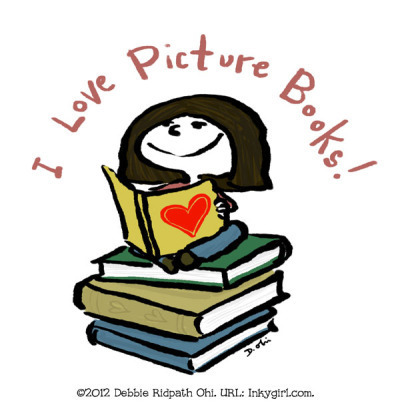
Picture books are important because of how readers interact with them, especially the read-aloud experience. No matter how many awards it may have won or how beautiful the prose or illustrations, an unread picture book collecting dust on a shelf is just paper and cardboard. The magic begins when a child or grown-up reader opens up the book.

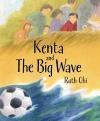


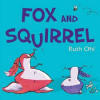
Some parents try to rush their children out of picture books into chapter books because they believe that reading text-heavy books will help young people prepare for standardized testing, not realizing that picture books can be a valuable resource and enjoyed by older children, even up through high school.
With the above mind, here's why I think picture books are important:
Picture books introduce children to the concept of reading, even if they can't read yet. In a Boston.com interview, Bob Staake said that when he was a kid, he used to flip through grown-up magazines and fixate on whatever graphic element caught his attention (e.g. a photo, an illustration, an ad). "That was reading to me. That is the way kids start to read, and parents don’t respect it enough. The idea that looking at things is not as important as reading the written word, that’s BS."




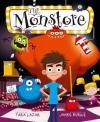
Picture books encourage conversation between young and older readers. While some children enjoy reading picture books on their own, it's often the case that an adult or older sibling reads to a younger child. Reading a picture book aloud prompts conversations about what's happening in the story, what the characters are feeling, meanings of words, how what's happening might relate to the child.

Picture books help bridge the gap between generations, strengthening bonds and forming connections as an older reader (whether parent, grandparent, older sibling, teacher, librarian, etc.) reads aloud to a child.
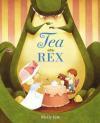


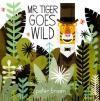
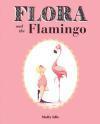
Picture books strengthen visual thinking skills. Picture books help children connect what they observe with how they reason, linking concepts with words.
Picture books introduce children to a love of art in a way that just taking a child to an art gallery can't achieve. The illustrations aren't mere decoration to the text. They enhance the story and emotions. The context encourages a child to go back to different pictures over and over, noticing new things, reading characters' emotions and interactions, possible secondary subplots that are told only in the pictures.

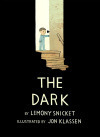
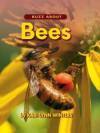


Picture books teach children how to be better listeners. In a read-aloud experience, children learn that paying attention makes reading the book much more fun. As Emma Walton Hamilton points out, this helps prepare children to become better listeners in later life.
Picture books help children develop critical thinking skills. Karen Lotz of Candlewick Press points out in a New York Times piece: "To some degree, picture books force an analog way of thinking. From picture to picture, as the reader interacts with the book, their imagination is filling in the missing themes." Picture books stimulate a state of mind in children that words alone can't achieve, says J. Richard Gentry in Psychology Today.

Picture books give young readers a sense of control and help build self-confidence. In a world where there seem to be so many things that they aren't allowed to do and where adults have final say, a picture book offers an opportunity for a child to feel part of the story and control the pacing of the story. They can pause over certain pages, go back to revisit another part of the story. They can read slowly or quickly.

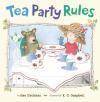
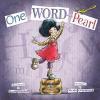
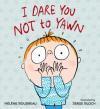
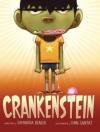
Picture books introduce complex concepts in a safe environment. Some even recommend using picture books for older children (middle school and even high school), to set the stage for introducing broader topics of study like art or history, or for illustrating an abstract concept. "With picture books, each student in the class can access new information at his/her individual level of readiness," says Keith Schoch in Basic Literacy Through Picture Books.




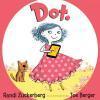
Picture books help children discover themselves and the world. No matter what the topic or issue or emotion, there is likely a picture book that addresses it.
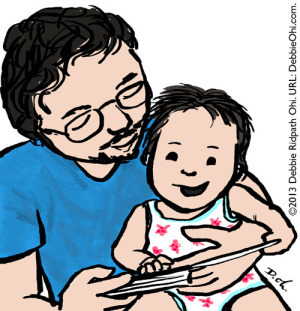
Picture books help build vocabulary. Children will often be introduced to words in picture books that they would not find in simpler early readers. Even when an adult isn't around to help, defining unknown words becomes easier because the pictures provide clues to the reader.

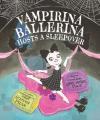
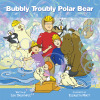


Picture books plant the seed for writing skills. "It is the joyous power of picture books that turns young listeners into readers and readers into writers," says Charles Ghigna.


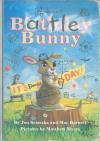


Picture books help show children that reading is important. Especially in a world where everything moves so quickly and adults are always rushing around and busy, the fact that a grown-up will take the time to read a book aloud to a child sends a positive message about reading as well as about the relationship.
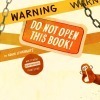
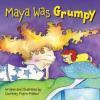


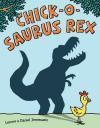
Picture books encourage joy in reading. Reading picture books is FUN, whether by yourself or with a grown-up or child. When being read to, a child can tell that the adult is enjoying himself/herself, and that helps reinforce the message that READING IS FUN.

Picture books offer comfort. They're non-threatening, they're fun to read. Children (and grown-ups!) go back to reread familiar picture books. For me, rereading a favorite childhood picture book is like visiting an old friend. Or coming home.


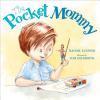

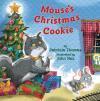
If any of the above has helped convince you of the importance of picture books, I encourage you to do one or more of the following:
(1) Go to the library and read through some picture books. Find your favorites, discover new favorites.
(2) Read a picture book aloud to a young person. If you don't have children, then visit a friend or family member who does. :-)

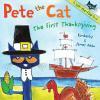

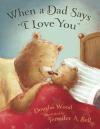

(3) Tweet or blog about a picture book that you like. It could be a newer book that you've just discovered, or tell us about one of your favorite picture books from childhood.
(4) Go to your local children's bookstore and buy a picture book. This not only helps support the bookstore but also the people who helped create it.
(5) Feel free to share the image below. No need to link back to my blog (but you're free to, of course!) but please do keep my copyright info intact.
Now go forth and read a picture book!
-- Debbie

-------
Source material, related resources and other helpful links:
Parents - Empower Children As Thinkers With Picture Books! - by J. Richard Gentry, Ph.D.
Bob Staake: Illustrator and looker (subscription needed)
Creating Reluctant Readers and Picture Books - by Heather Newman
How Picture Books Play A Role In A Child's Development - by Lori Calabrese
Introduction to Show Me A Story: Why Picture Books Matter - by David Wiesner
Not Too Old For Picture Books - Heart Of The Matter
Basic Literacy Through Picture Books (video) - by Keith Schoch
Why Picture Books Matter: 7 Reasons To Read With Your Child - on Britmums
Critical Literacy: Using Picture Books To Read The World - by Alexis Birner (M.Ed) and Lindsay Bromley (M.Ed)
Picture Books Are Not Just For Children: 10 Reasons Why - by Rick Walton
How Picture Books Can Help Children Read Better - Studydog.com







Making time to read (and a new Will Write For Chocolate)
Updated Will Write For Chocolate.
My life has gotten progressively busier over the past few years, and I'm finding it more necessarily to actually schedule in pleasure reading time. Sounds stuffy and formal, I know! But if I don't do that, my reading time gets cut way down.
By "pleasure reading," I mean reading just for the joy of it. Not because the books are written by people I know (even though it's likely I'll love those books, too) or books I've promised to review or books to improve my craft or business. I mean stories that I'm reading JUST FOR FUN.
And I'm thinking it's time for another of my own Secret Dates very soon. Happily, my husband understand. :-)





















